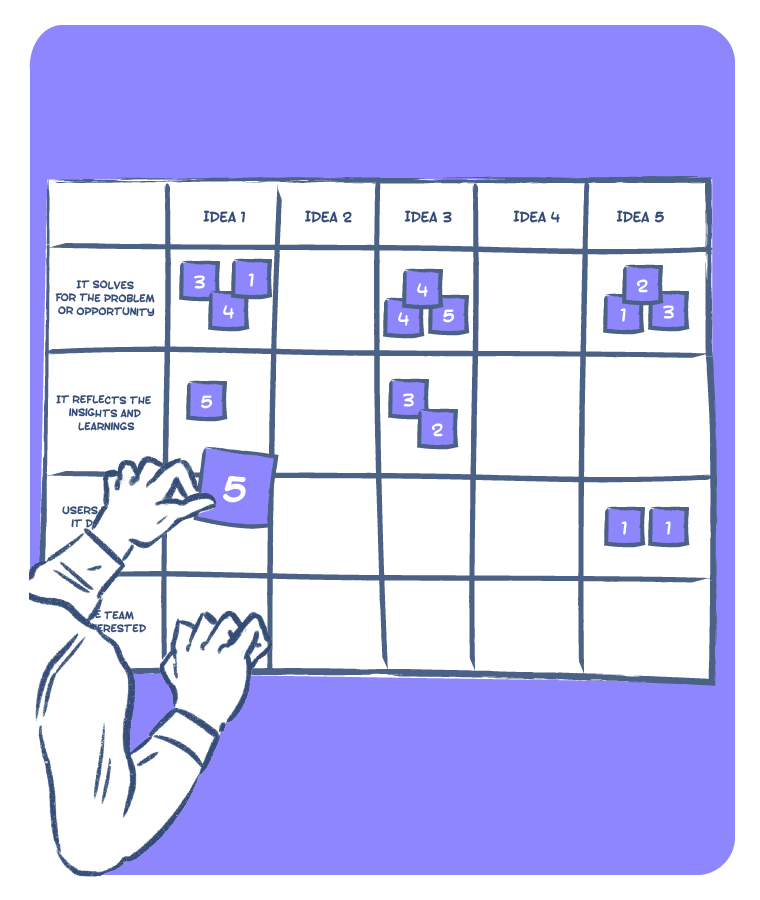HUMAN CENTERED DESIGN | IDEATION
Concept Prioritisation
15 Min
The Concept Prioritisation tool helps teams prioritise the ideas they have come up with during brainstorming sessions. While a team may choose to simply vote on ideas and choose those with the highest votes, the tool here helps them consider various factors before a final choice is made.
USE CASES
- Evaluate ideas using diverse and logical criteria.
- Build consensus on ideas to take forward into prototyping
LIMITATIONS
Going through a detailed prioritisation exercise can be a cumbersome and exhausting experience. An alternative to using an extensive grid, is using a simpler 2x2 grid or getting teams to vote on favourite ideas.

